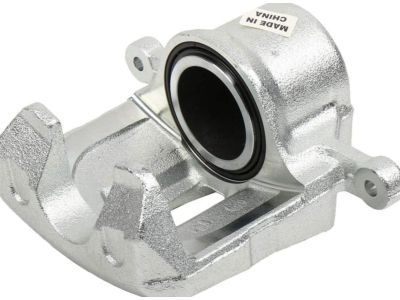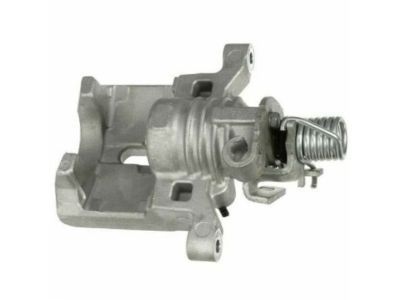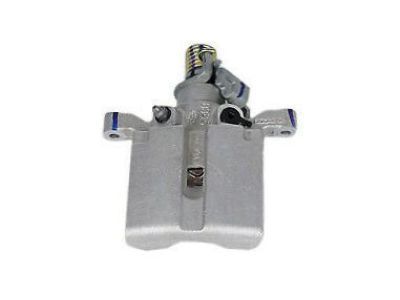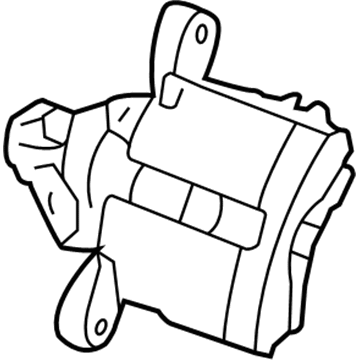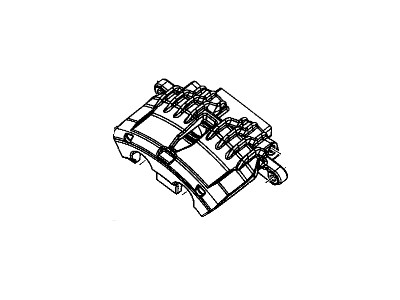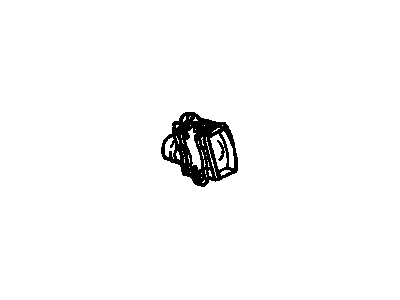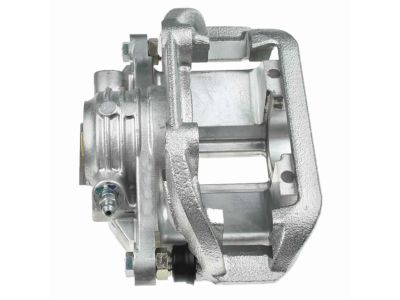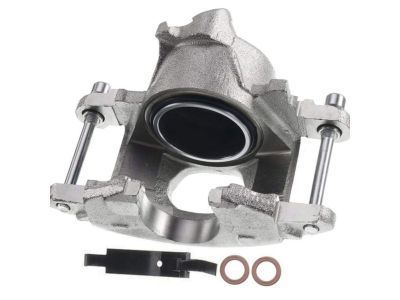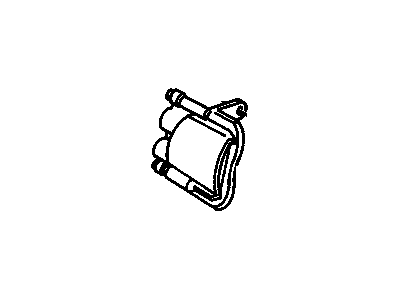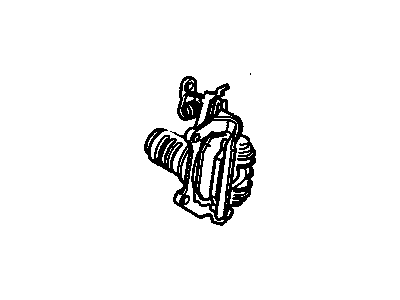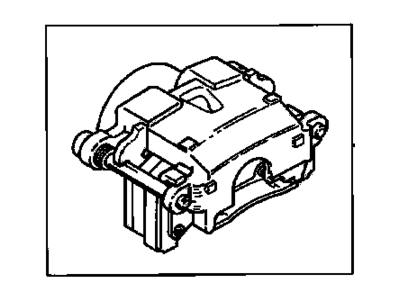My Garage
My Account
Cart
Genuine Chevrolet Impala Brake Calipers
Caliper- Select Vehicle by Model
- Select Vehicle by VIN
Select Vehicle by Model
orMake
Model
Year
Select Vehicle by VIN
For the most accurate results, select vehicle by your VIN (Vehicle Identification Number).
25 Brake Calipers found
Chevrolet Impala Housing Assembly, Front Brake Caliper
Part Number: 13279639$133.00 MSRP: $262.23You Save: $129.23 (50%)Ships in 1-2 Business DaysChevrolet Impala Housing Assembly, Front Brake Caliper
Part Number: 13279638$133.00 MSRP: $262.23You Save: $129.23 (50%)Ships in 1-2 Business DaysChevrolet Impala Caliper Assembly, Rear Brake (W/O Brake Pads & Bracket
Part Number: 25990068$179.23 MSRP: $353.95You Save: $174.72 (50%)Ships in 1-2 Business DaysChevrolet Impala Caliper Assembly, Rear Brake (W/O Brake Pads & Bracket
Part Number: 25990067$152.13 MSRP: $285.46You Save: $133.33 (47%)Ships in 1-2 Business DaysChevrolet Impala Housing, Rear Brk Clpr
Part Number: 13533555$63.65 MSRP: $178.04You Save: $114.39 (65%)Ships in 1-2 Business DaysChevrolet Impala Housing, Rear Brk Clpr
Part Number: 13533556$48.32 MSRP: $136.96You Save: $88.64 (65%)Ships in 1-2 Business DaysChevrolet Impala Caliper Asm,Front Brake (Service)
Part Number: 18046196$150.65 MSRP: $284.26You Save: $133.61 (47%)Ships in 1-2 Business DaysChevrolet Impala Caliper Asm,Rear Brake
Part Number: 88965667$73.86 MSRP: $231.41You Save: $157.55 (69%)Chevrolet Impala Caliper Assembly, Front Brake (W/O Brake Pads & Bracket
Part Number: 25983763$119.68 MSRP: $217.61You Save: $97.93 (45%)Ships in 1-2 Business DaysChevrolet Impala Caliper,Front Brake (W/O Brake Pads & Bracket)
Part Number: 25983762$120.77 MSRP: $217.61You Save: $96.84 (45%)
| Page 1 of 2 |Next >
1-20 of 25 Results
Chevrolet Impala Brake Calipers
Brake Caliperss on Chevrolet Impala is part of disc brake system that produce the required force to slow or stop the car. When the brake pedal is pushed, a brake fluid extends the caliper's pistons with pressure, this then forces the brake pad to come into contact with the rotor. This action put into place totally ceases the rotation of the wheel. Chevrolet Impala models utilize two primary types of brake calipers: terminological: fixed and floating. As with the floating calipers, the fixed ones are firmly situated and the pistons are located on both sides of the rotor but cost a lot more. The other type of brake caliper is the floating calipers which are also referred to as sliding calipers, they have a single piston that slides the caliper so as to apply pressure on both faces of the rotor. Floating calipers are easier to manufacture and cheaper than fixed versions; however, they tend to develop glitches such as sticking and that contribute to wear and tear, thus reducing efficiency. The brake caliper has to be designed and constructed in the right manner in order for it to improve the safety and performance of the Impala.
Each OEM Chevrolet Impala Brake Calipers we offer is competitively priced and comes with the assurance of the manufacturer's warranty for the part. Furthermore, we guarantee the speedy delivery of your orders right to your doorstep. Our hassle-free return policy is also in place for your peace of mind.
Chevrolet Impala Brake Calipers Parts Questions & Experts Answers
- Q: How to remove and install brake calipers on Chevrolet Impala?A: Dust created by the brake system is harmful to your health. Never blow it out with compressed air and don't inhale any of it. An approved filtering mask should be worn when working on the brakes. Do not, under any circumstances, use petroleum-based solvents to clean brake parts. Use brake system cleaner only. If replacement is indicated (usually because of fluid leakage), it is recommended that the calipers be replaced, not overhauled. New and factory rebuilt units are available on an exchange basis, which makes this job quite easy. Always replace the calipers in pairs-never replace just one of them. This procedure applies to front and rear disc brakes. Removal: Loosen the wheel lug nuts, raise the end of the vehicle you're working on and support it securely on jack stands. Block the wheels at the opposite end. Remove the wheels. Depress the caliper piston with a C-clamp just enough to allow the pad to clear the disc (On front brakes and rear brakes with Parking Brake Shoes (instead of actuator-type calipers), depress the caliper pistons into the bottom of their bores with a large C-clamp). Caution: Do not attempt to depress the piston into the caliper on later models with parking brake actuator-type calipers. Disconnect the Brake Line from the caliper and plug it to keep contaminants out of the brake system and to prevent losing any more brake fluid than is necessary (Brake caliper mounting details: Brake line fitting Caliper mounting bolts Caliper mounting bracket bolts). Note: If you're simply removing the caliper for access to other components, don't disconnect the brake line from the caliper. Remove the caliper mounting bolts (or guide pins on rear calipers). Note: On front calipers, hold the guide pin with a wrench to remove the mounting bolts (Hold the guide pin with one wrench while removing the lower caliper mounting bolt with another). Detach the caliper from its mounting bracket. Installation: Install the caliper by reversing the removal procedure. Remember to replace the copper sealing washers on either side of the brake line fitting with new ones. Tighten the caliper mounting bolts and the brake line banjo fitting bolt to the torque. Bleed the brake system. Install the wheels and lug nuts and lower the vehicle. Tighten the wheel lug nuts to the torque. Check the operation of the brakes thoroughly before placing the vehicle into normal service.
Related Chevrolet Impala Parts
Browse by Year
2020 Brake Calipers 2019 Brake Calipers 2018 Brake Calipers 2017 Brake Calipers 2016 Brake Calipers 2015 Brake Calipers 2014 Brake Calipers 2013 Brake Calipers 2012 Brake Calipers 2011 Brake Calipers 2010 Brake Calipers 2009 Brake Calipers 2008 Brake Calipers 2007 Brake Calipers 2006 Brake Calipers 2005 Brake Calipers 2004 Brake Calipers 2003 Brake Calipers 2002 Brake Calipers 2001 Brake Calipers 2000 Brake Calipers 1996 Brake Calipers 1995 Brake Calipers 1994 Brake Calipers


